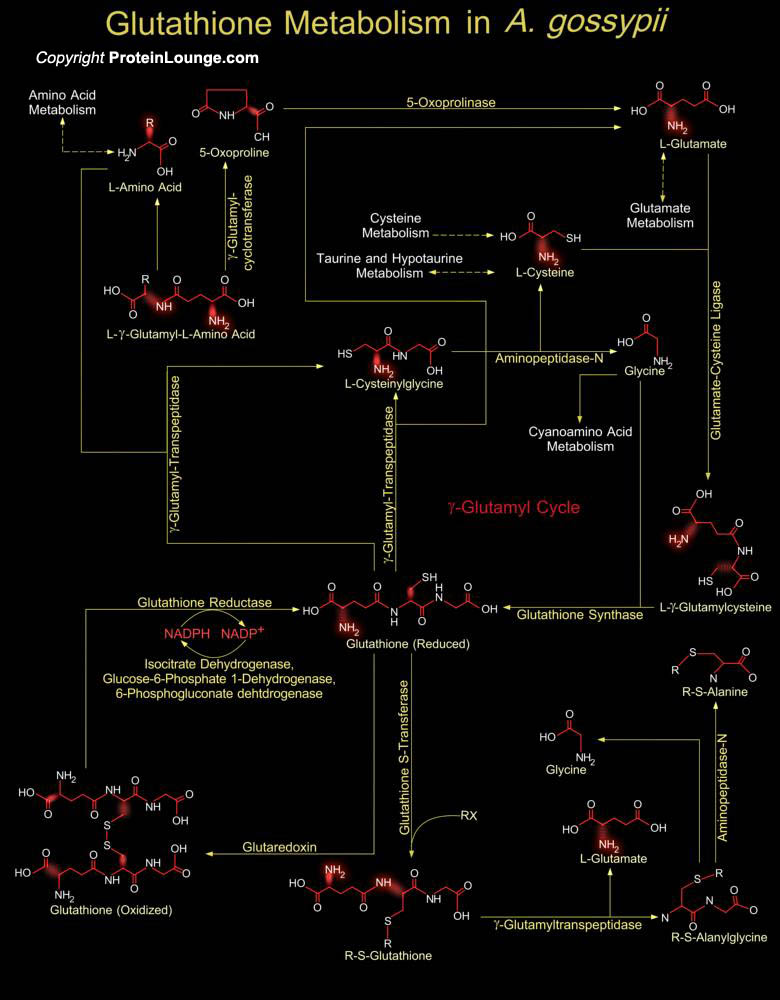
Eremothecium gossypii (also known as Ashbya gossypii) is a filamentous fungus or mold closely related to yeast Saccharomyces cerevisae. It was originally isolated from cotton as a pathogen causing stigmatomycosis and relies on heteropterous insects for its dispersal of spores or mycelia fragments. A. gossypii is also recognized for its ability to produce riboflavin (vitamin B2) which has been exploited for the commercial interest (Ref.1). Glutathione (gamma-glutamyl-cysteinyl-glycine; GSH) is the most abundant low-molecular-weight thiol. It is a sulfhydryl (-SH) antioxidant, antitoxin, and enzyme cofactor. It is ubiquitous in animals, plants, and microorganisms, and being water soluble is found mainly in the cell cytosol and other aqueous phases of the living[..]
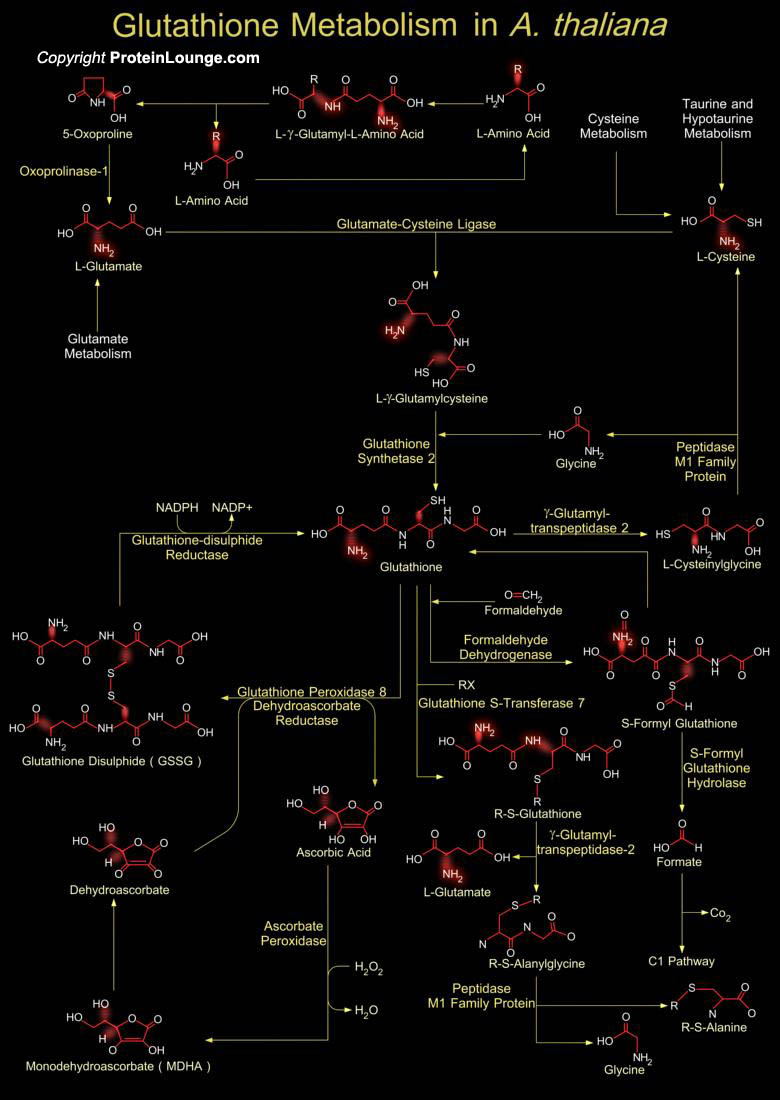
Glutathione is a sulfhydryl (-SH) antioxidant, antitoxin, and enzyme cofactor. It is ubiquitous in animals, plants, and microorganisms, and being water soluble is found mainly in the cell cytosol and other aqueous phases of the living system. Glutathione is a tripeptide composed of Glutamate, Cysteine and Glycine that has numerous important functions within cells. Glutathione is homeostatically controlled, both inside the cell and outside. It often attains millimolar levels inside cells, which makes it one of the most highly concentrated intracellular antioxidants. Glutathione exists in two forms. The antioxidant "reduced Glutathione" tripeptide is conventionally called Glutathione and abbreviated Gsh; the oxidized form is a sulfur-sulfur linked compound,[..]
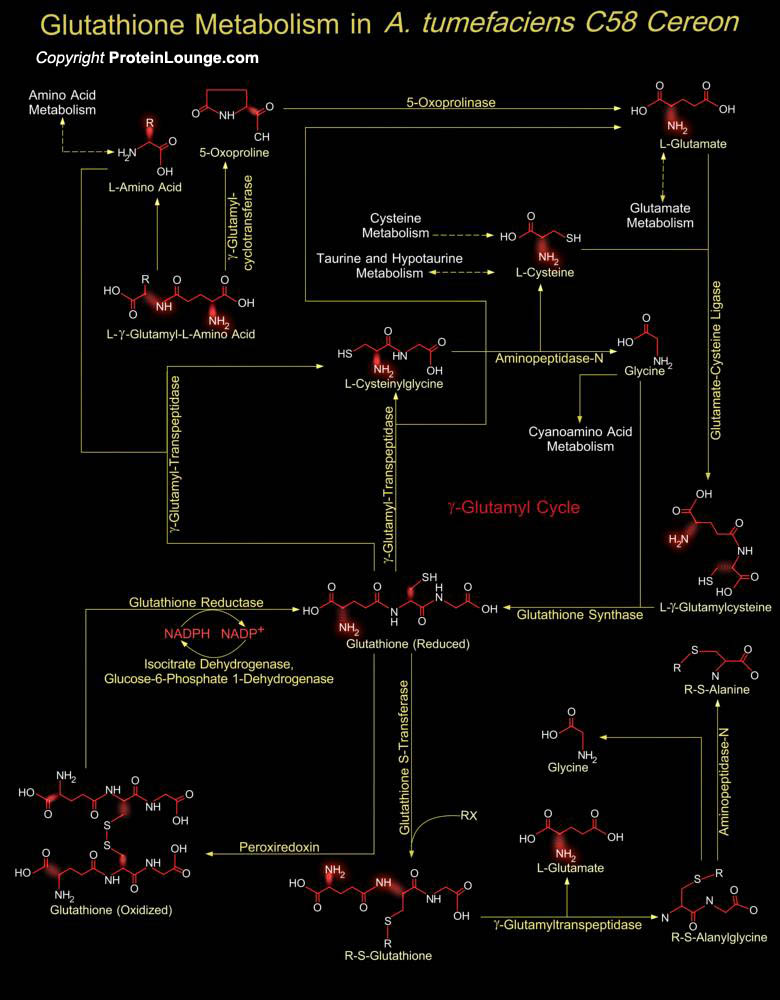
Agrobacterium tumefaciens C58 Cereon is a Gram-negative, non-sporing, motile, rod-shaped bacterium. It is a plant pathogen capable of transferring a defined segment of DNA to a host plant replacing the transferred tumor-inducing genes with exogenous DNA generating a gall tumor. A. tumefaciens strain C58 has an unusual structure consisting of one circular and one linear chromosome (Ref.1). Glutathione metabolism was largely depicted by the γ‐glutamyl cycle proposed in 1970. However it lacked knowledge regarding transport and degradation of glutathione which led to its renaming as glutathione cycle that represents the glutathione metabolism accurately.Glutathione is a tripeptide of glutamate, cysteine and Glycine found in almost every cell. It cannot enter most[..]
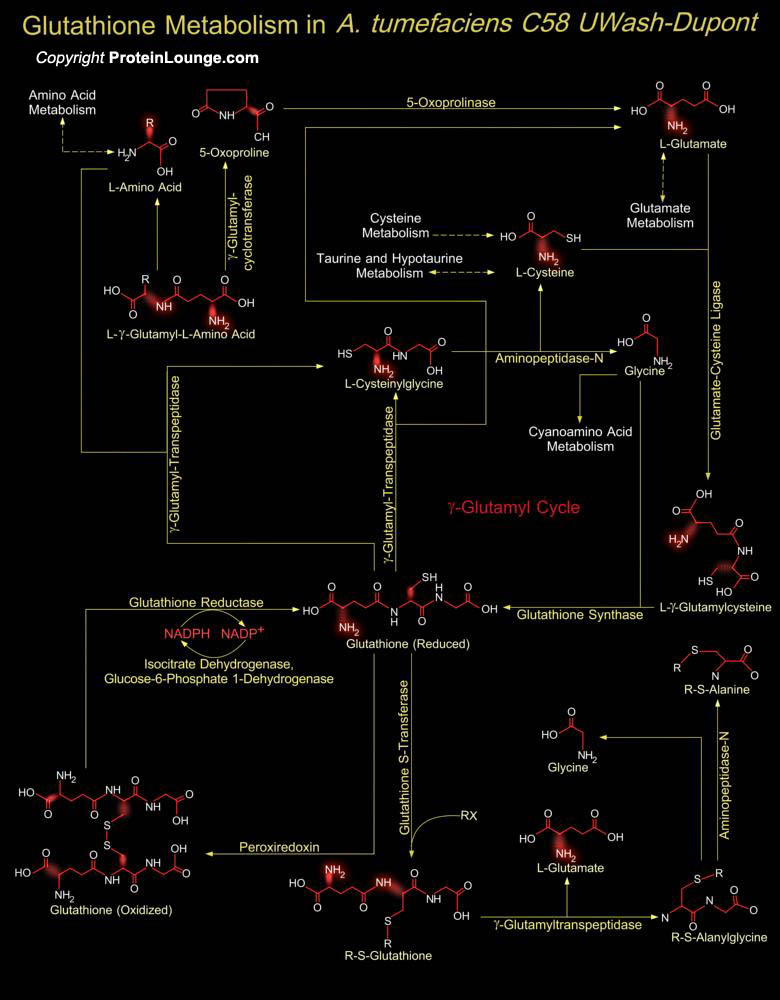
Agrobacterium tumefaciens C58 (UWash/Dupont) is a Gram-negative, non-sporing, motile, rod-shaped bacterium. It is a plant pathogen capable of transferring a defined segment of DNA to a host plant replacing the transferred tumor-inducing genes with exogenous DNA generating a gall tumor. A. tumefaciens strain C58 has an unusual structure consisting of one circular and one linear chromosome (Ref.1). Glutathione metabolism was largely depicted by the γ‐glutamyl cycle proposed in 1970. However it lacked knowledge regarding transport and degradation of glutathione which led to its renaming as glutathione cycle that represents the glutathione metabolism accurately.Glutathione is a tripeptide of glutamate, cysteine and Glycine found in almost every cell. It cannot[..]
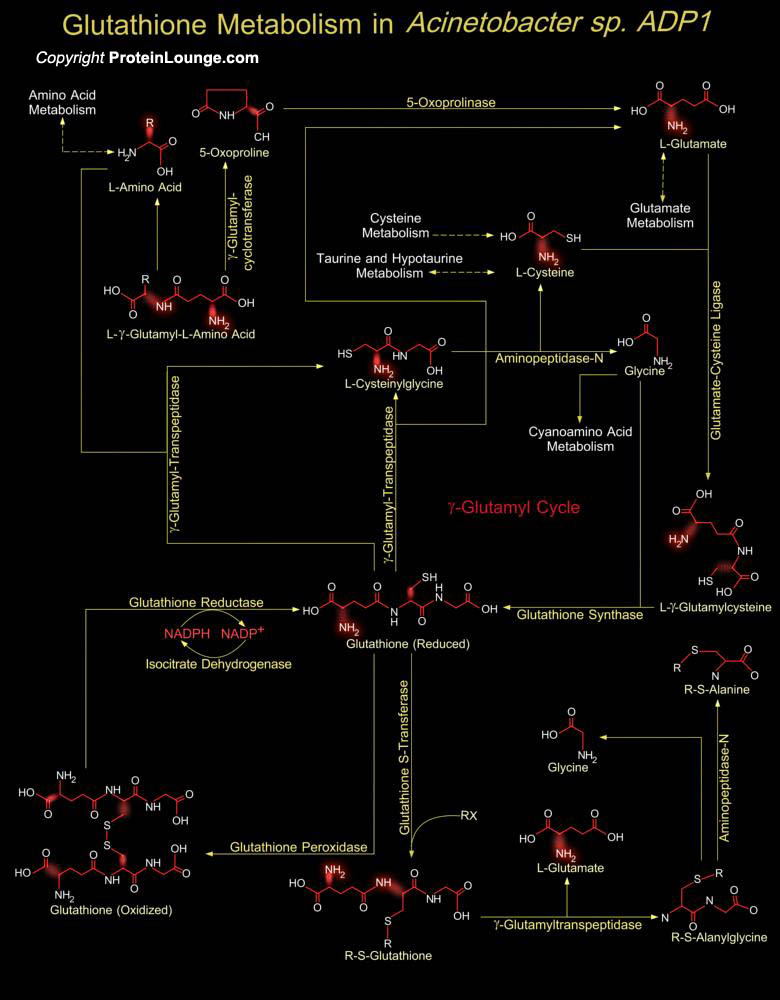
Gram-negative bacteria of the genus Acinetobacter are classified in the gamma subdivision of the Gram-negative proteobacteria and more precisely on the Moraxellaceae branch. Isolates of Acinetobacter are characterized as strictly aerobic non-motile heterotrophic mesophiles, capable of utilising a great variety of substrates as carbon sources, from alkanes to organic acids, especially aromatic ones. The Acinetobacter baylyi strain ADP1 is a nutritionally versatile soil bacterium, closely related to representatives of the well-characterized Pseudomonas aeruginosa and Pseudomonas putida (Ref.1). Glutathione in Acinetobacter sp. is a tripeptide, composed of glutamate, cysteine and glycine, and has numerous important functions within the bacterial cell. Glutathione is a[..]
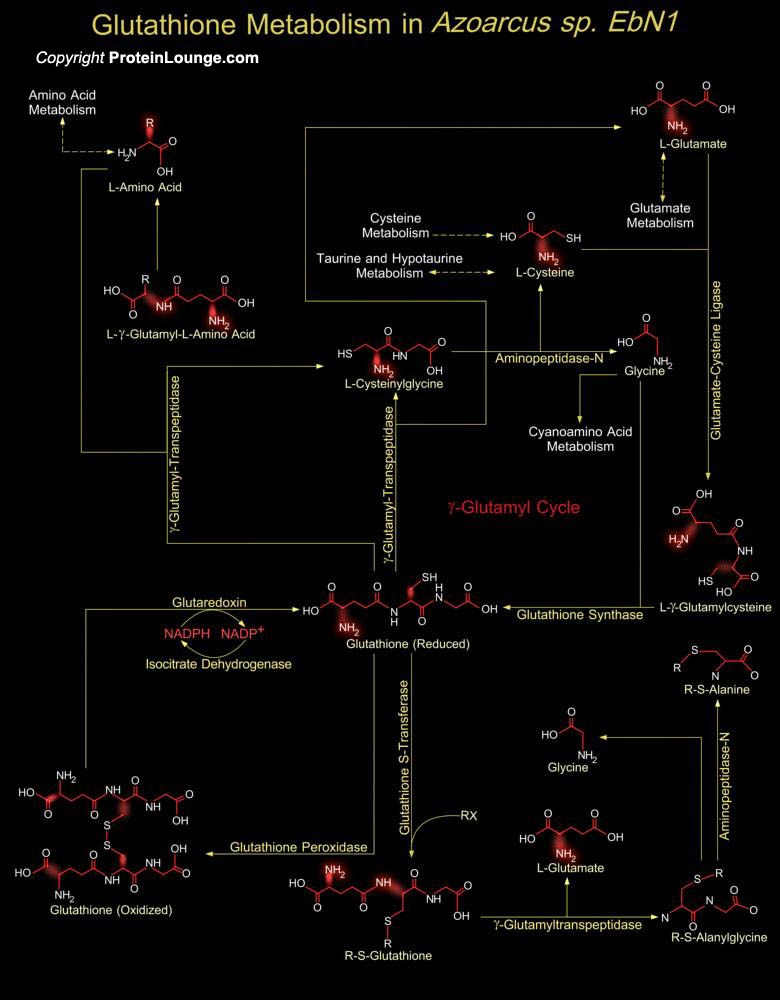
Aromatoleum aromaticum (strain EbN1) now known as Azoarcus sp. (strain EbN1) is a proteobacteria with one chromosome and two plasmids, encoding for 10 anaerobic and 4 aerobic aromatic degradation pathways. It is associated with microbial degradation of aromatic and other refractory compounds, including hydrocarbons in anoxic waters and soils. Strain EbN1 is an aromatic-degrading bacteria found in freshwater and soil habitats. A unique property of strain EbN1 is its capacity to degrade toluene and ethylbenzene via two different, strictly anaerobic pathways. The absence of nitrogen fixation and specific interaction with plants separates EbN1 ecophysiologically from the closely related nitrogen-fixing plant symbionts of the Azoarcus cluster (Ref.1). Glutathione is an[..]
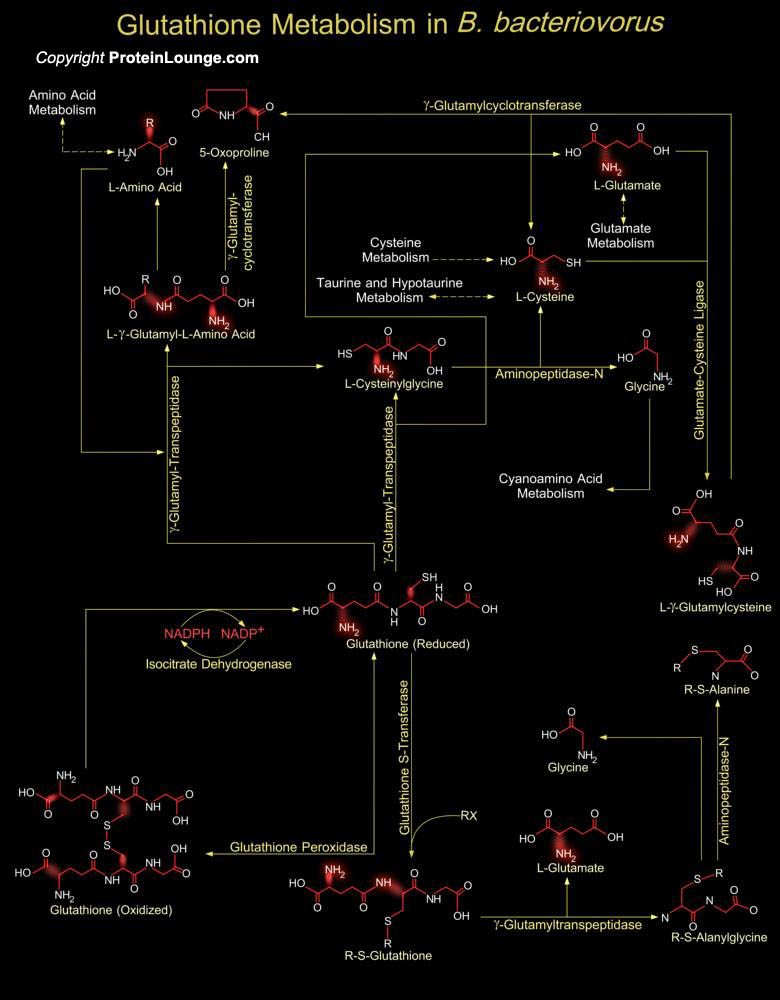
Bdellovibrio bacteriovorus is a tiny and highly motile Delta-Proteobacterium that preys on other Gram-negative bacteria. B. bacteriovorus attaches itself to the cell wall of its prey and invades the cell where it goes through a full-life cycle. After it reproduces, the offspring burst out of the cell. Despite its small size, it has a relatively large genome encoding more than 3500 proteins. Glutathione metabolism in B. bacteriovorus occurs within cells in two closely linked, enzymatically controlled reactions that utilize ATP and draw on nonessential amino acids as substrates. Glutathione is a tripeptide, composed of glutamate, cysteine and glycine, and has numerous important functions within the bacterial cell. This tripeptide is specifically a thiol compound, present[..]
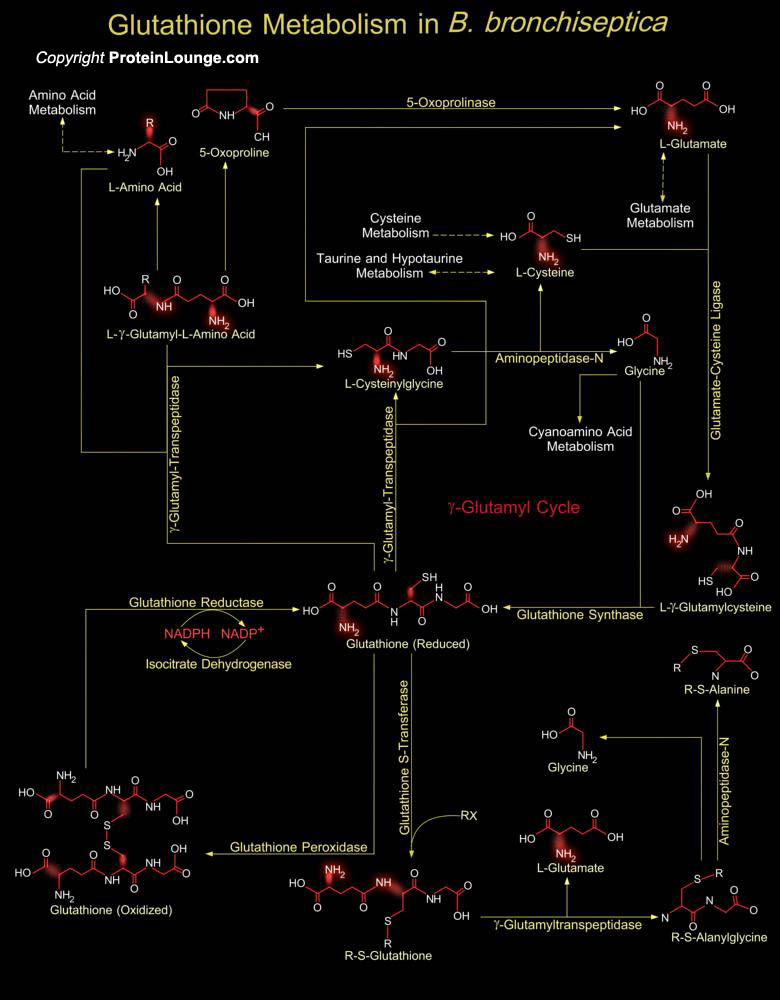
Bordetella bronchiseptica, Bordetella pertussis and Bordetella parapertussis and are closely related Gram-negative Beta-proteobacteria that colonize the respiratory tracts of mammals. B. bronchiseptica causes chronic respiratory infections in a wide range of animals. B. bronchiseptica is encountered as a commensal or colonizer of the respiratory tract of humans and rarely in association with infection. When found as a probable pathogen, most infections have been respiratory tract in origin and have occurred in severely compromised hosts. The outer-membrane protein pertactin of B. bronchiseptica is believed to function as an adhesin and is an important immunogen (Ref.1).Glutathione in Bordetella is a tripeptide, composed of Glutamate, Cysteine and Glycine, and has[..]
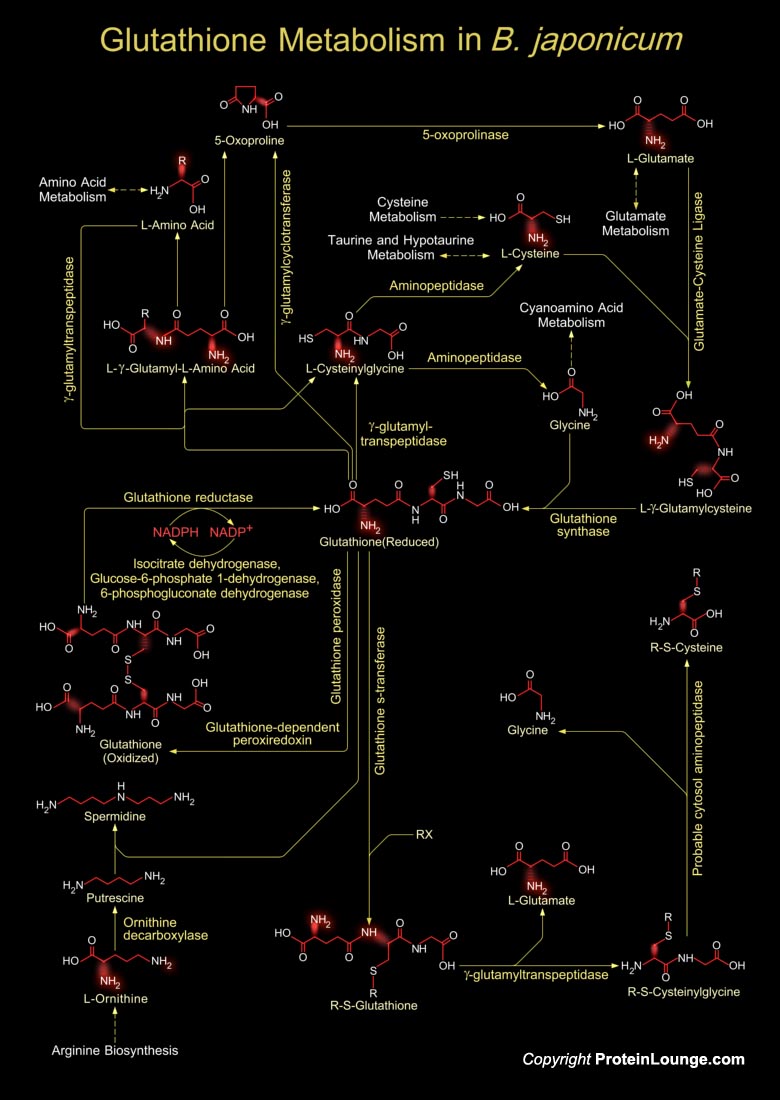
Rhizobium, Bradyrhizobium, Mesorhizobium, Sinorhizobium and Azorhizobium-known as Rhizobia-are Gram-negative, nitrogen-fixing bacteria of agronomic importance because they perform nitrogen-fixing symbiosis with leguminous plants. They are responsible for the world’s largest portion of fixed atmospheric nitrogen. Bradyrhizobium japonicum has been used since 1957 in molecular genetics, physiology, and ecology due to its excellent ability in symbiotic nitrogen fixation. Nodule formation and the subsequent nitrogen-fixation result from a series of interactions controlled by the exchange of molecular signals between symbiotic bacteria and host plants followed by expression of genes from both symbiotic partners. B. japonicum is able to form determinant-type globular[..]
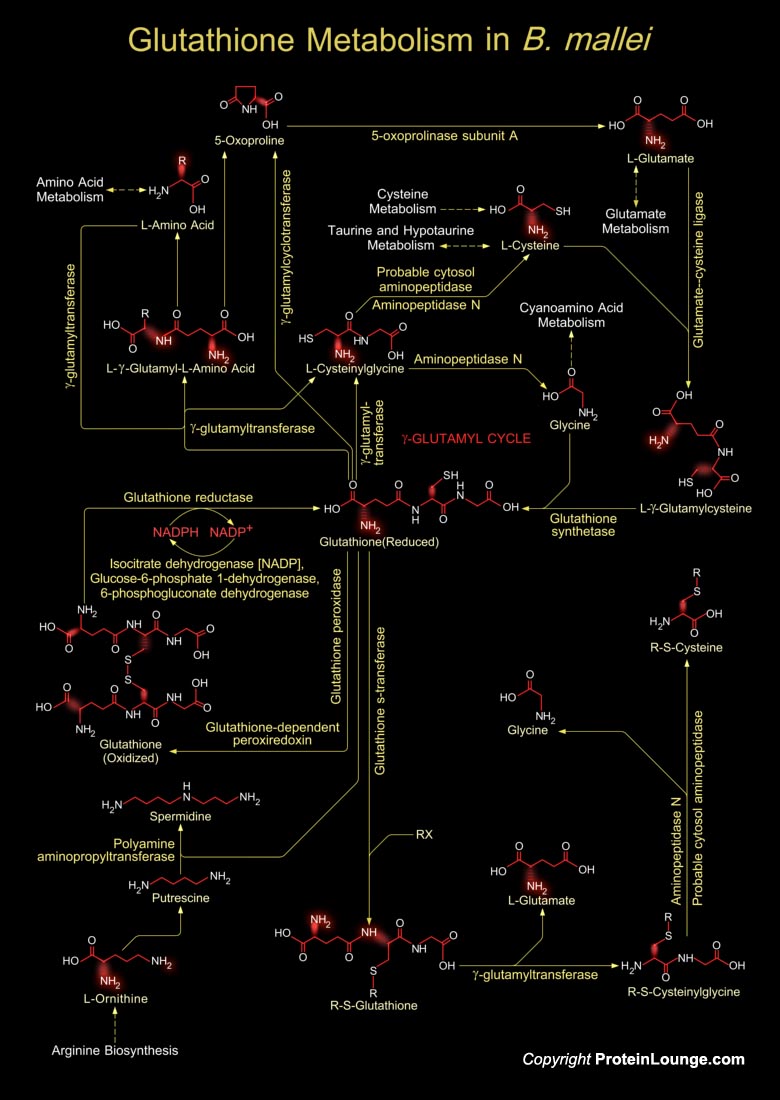
Burkholderia mallei are gram negative bacteria and are evolved as obligate parasite of horses, mules, and donkeys with no other known natural reservoir. B.mallei is regarded as a potential biological weapon because it is highly infectious as an aerosol and results in a disease that is painful, incapacitating, difficult to diagnose, and often fatal. Glutathione is a tripeptide present in B. mallei sp., which is composed of Glutamate, Cysteine and Glycine, and has numerous important functions within cells. The tripeptide is the thiol compound, present in the highest concentration in all types of cells (Ref.1 & 2).Glutathione metabolism in B. mallei involves both the synthesis of Glutathione and its catabolism. Glutathione biosynthesis starts from an L-Amino acid,[..]
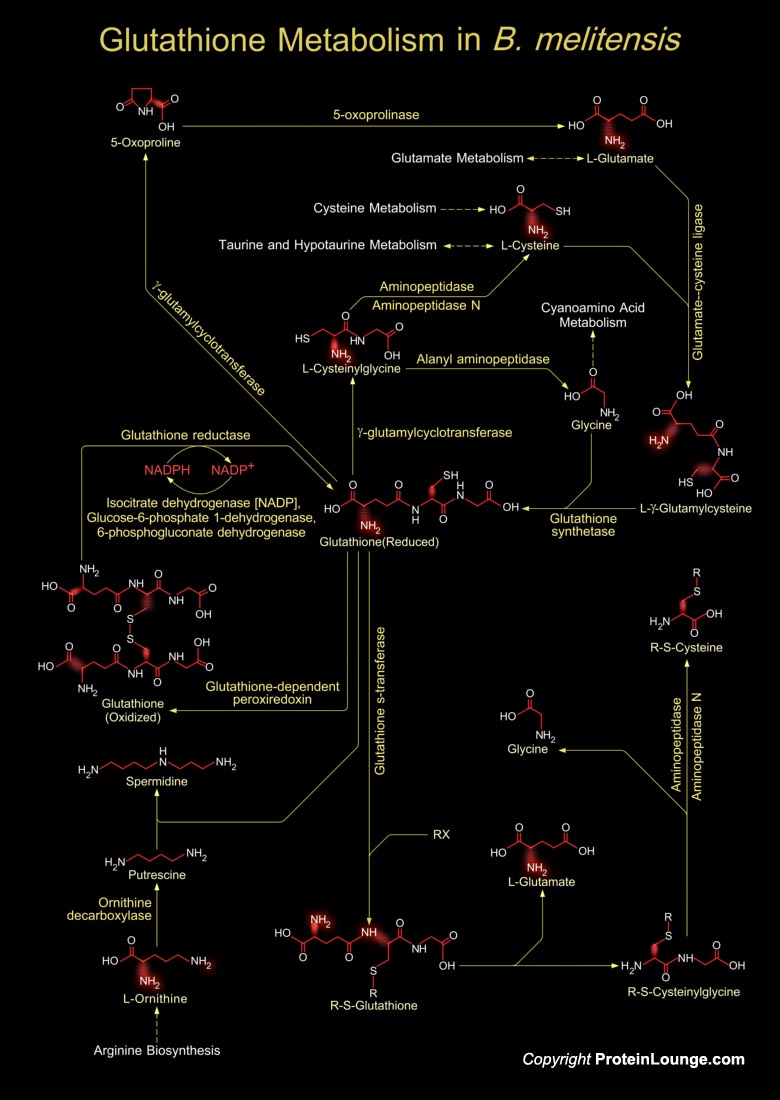
Brucella is a Gram-negative aerobic pathogen that is distringuished from most other pathogens because it does not have "obvious virulence factors" like capsules, fimbriae, flagella, exotoxins, exproteases, or other exoenzymes, cytolysins, resistance forms, antigenic variation, plamids, or lysogenic phages (Ref.1). Brucella sp. causes a "zoonotic disease endemic in many areas of the world, characterized by chronic infections in animals leading to abortion and infertility, and a systemic, febrile illness in humans". Brucella melitensis is the cause of brucellosis in goats, cattle, sheep, pigs, dogs, marine mammals, and several wild animals. Goats are the natural hosts for B. melitensis. This bacterium is also the cause of a rarer, more severe systemic[..]
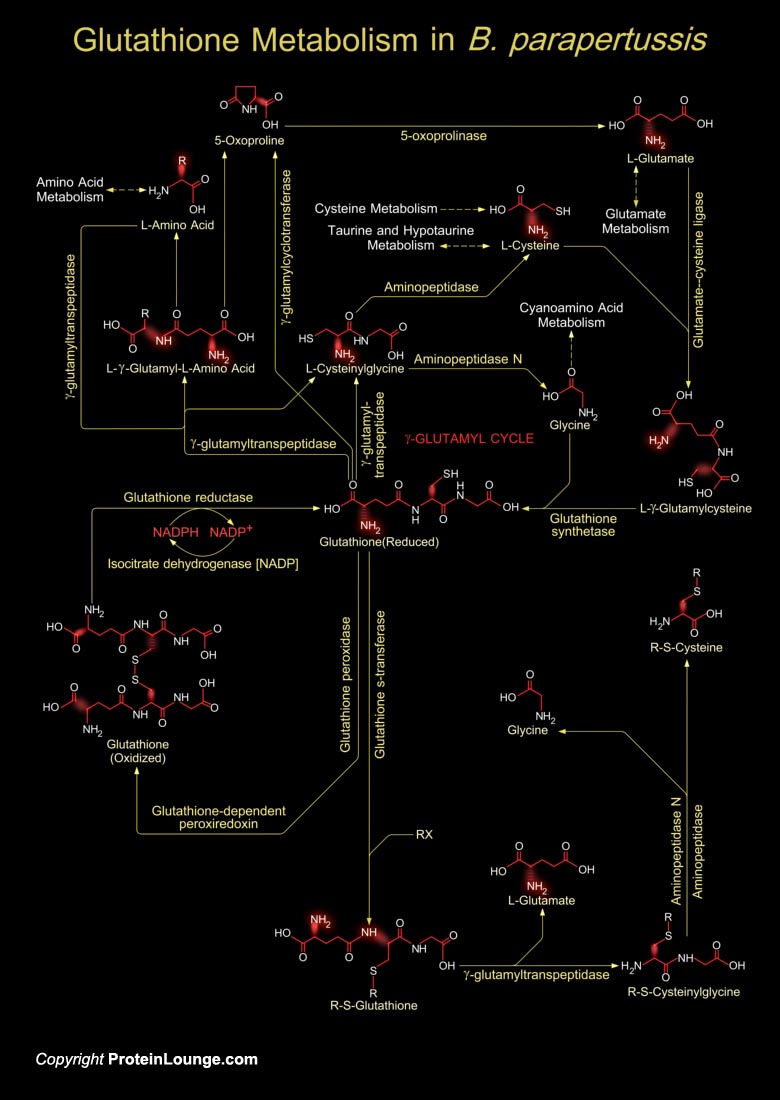
Bordetella pertussis, Bordetella parapertussis and Bordetella bronchiseptica are closely related Gram-negative Beta-proteobacteria that colonizes the respiratory tracts of mammals. B. parapertussis causes whooping cough in a wide range of animals. It produces a complex array of adhesins, aggressins and toxins that are presumed to be important in the colonisation of its human host and in ensuring its survival and propagation. Adherence of B. parapertussis to ciliated epithelia is species-specific making it unlikely that the transfer of B. parapertussis between humans and sheep will result in an infection (Ref.1 & 2).Glutathione in Bordetella is a tripeptide, composed of Glutamate, Cysteine and Glycine, and has numerous important functions within the bacterial cell.[..]

